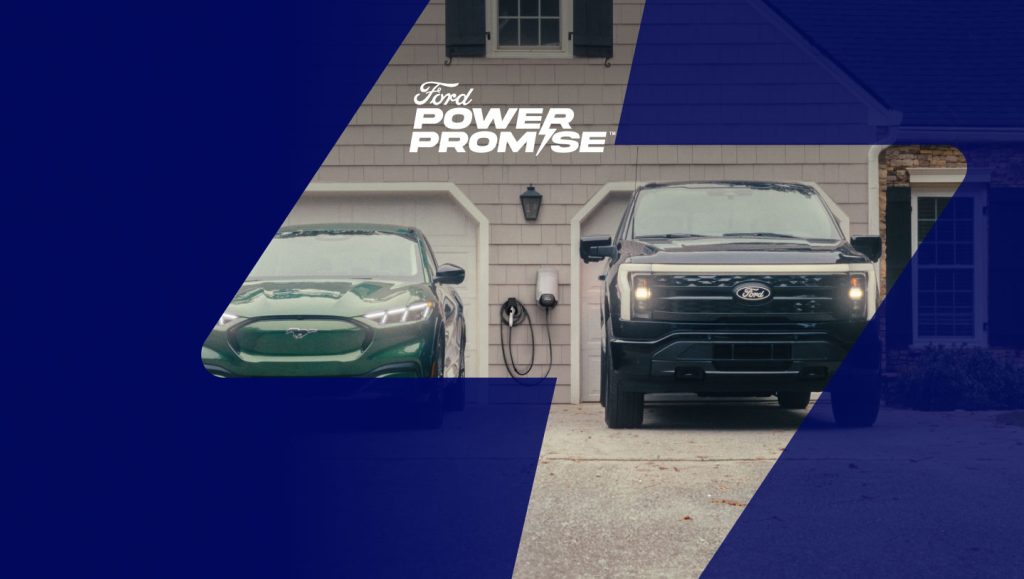
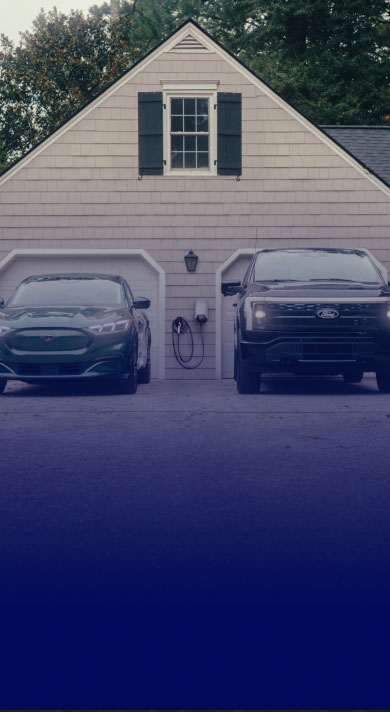
Going Electric at Lake Hartwell Ford
Electric Vehicle Confidence From Day One The support you need—on the first day of ownership and beyond.

Battery Confidence
Ford electric vehicles come with an eight-year/100k mile high-voltage battery warranty.* So you’ll have long-term support for the health of your battery.
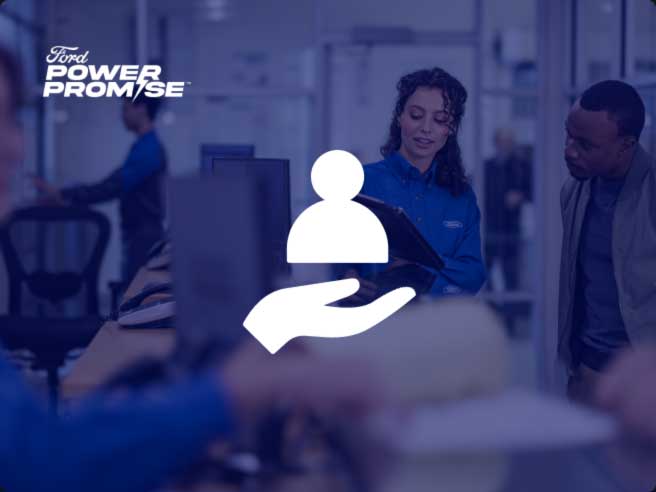
Ongoing Support and Guidance
Ford has your back thanks to our support specialists, our comprehensive nationwide Ford dealer network, and 24/7 Live Support** with Proactive Roadside Assistance.† Ask Lake Hartwell Ford how to get started.
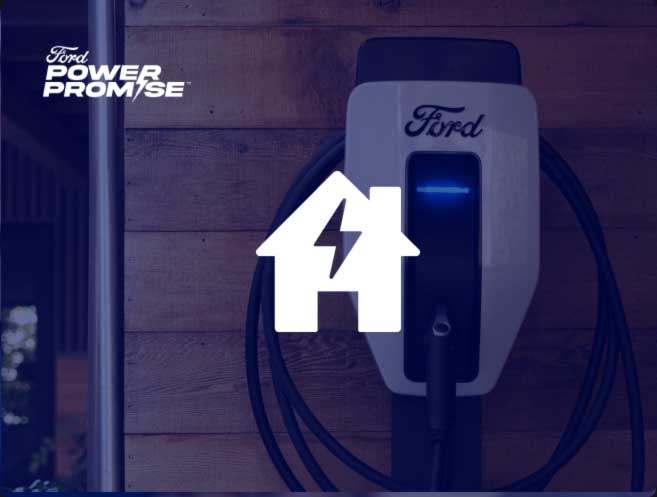
Home Charging
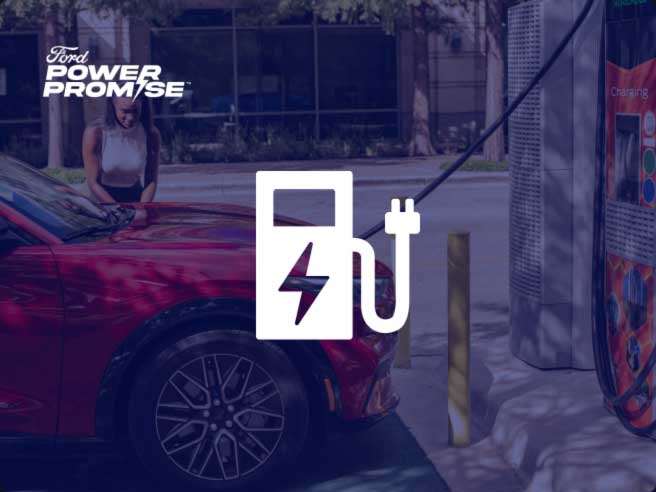
On-The-Road Charging
Find and pay for charging in the FordPass® App from your current route in Ford Connected Built-In Navigation. Plus, with the BlueOval™ Charge Network, you’ll have the largest public charging network in North America to choose from.ǂ
Disclaimers
* Consult the Battery Electric Vehicle Warranty Guide for full details or chat with an advisor at Lake Hartwell Ford for more info.
** Available only for Ford F-150 Lightning and Mustang Mach-E owners. Message and Data Rates May Apply. By texting, you agree to receive text messages. Text HELP for information. Text STOP to cancel. Privacy Policy at www.ford.com/help/privacy/. Customer must agree to Ford's Electric Vehicle 24/7 Live Support Service terms and opt-in to phone and text communications for 24/7 Live Support and proactive charging support. Not available on select holidays including New Year's Day, Memorial Day, Independence Day, Labor Day, Thanksgiving Day, Day after Thanksgiving Day and Christmas Day.
† Roadside Assistance is a complimentary offering to all Ford owners for up to 5 years or 60,000 miles (from the date of sale), whichever occurs first.
†† Must purchase or lease a new 2025 F-150 Lightning or Mustang Mach-E from a participating Ford dealer between 10/1/25 and 1/5/2026 to be eligible to receive (a) one (1) complimentary home charge station with complimentary home installation (excludes permitting costs and fees, if applicable); or (b) $2,000 bonus cash. Home charge station model and brand may vary based on availability. Offer not available to fleet or commercial customers. Complimentary home installation must be completed through Qmerit Electrification LLC. Installation exclusions apply. Must take retail delivery from an authorized Ford dealer's stock by 1/5/2026. No trade-in required. 2025 Mustang Mach-E inventory may be limited and may vary by location. See Lake Hartwell Ford for details, terms and the most current inventory status.
ǂ Based on original equipment manufacturers (OEM) / automotive manufacturers that sell all-electric vehicles and have active charging networks. Department of Energy data as of January 15, 2024 used. Numbers subject to change. FordPass®, compatible with select smartphone platforms, is available via download. Message and data rates may apply.

BlueCruise remains Consumer Reports top-ranked active driving assistance system for the second time in a row out of 17 systems tested, including Tesla’s Autopilot and GM’s Super Cruise, among others.*
Disclaimers
* Consumer Reports does not endorse products or services. To read the full report, visit www.ford.com/bluecruise.
** Available Feature. Equipped Ford vehicles come with either a complimentary trial period or an included duration, after which purchase of a BlueCruise subscription is required. Modem activation is required for subscription purchase and for initial activation of BlueCruise (for pre-2024-model year vehicles). See ford.com/bluecruise for details. BlueCruise is a driver-assist feature and does not replace safe driving or driver’s attention, judgment, or need to control the vehicle. Only remove hands in a Hands-Free Blue Zone. Always watch the road and be prepared to resume control. See Owner’s Manual for details and limitations.
Schedule Your Electric Vehicle Maintenance for Your Mustang Mach-E®, F-150 Lightning® or E-Transit™ at Lake Hartwell Ford
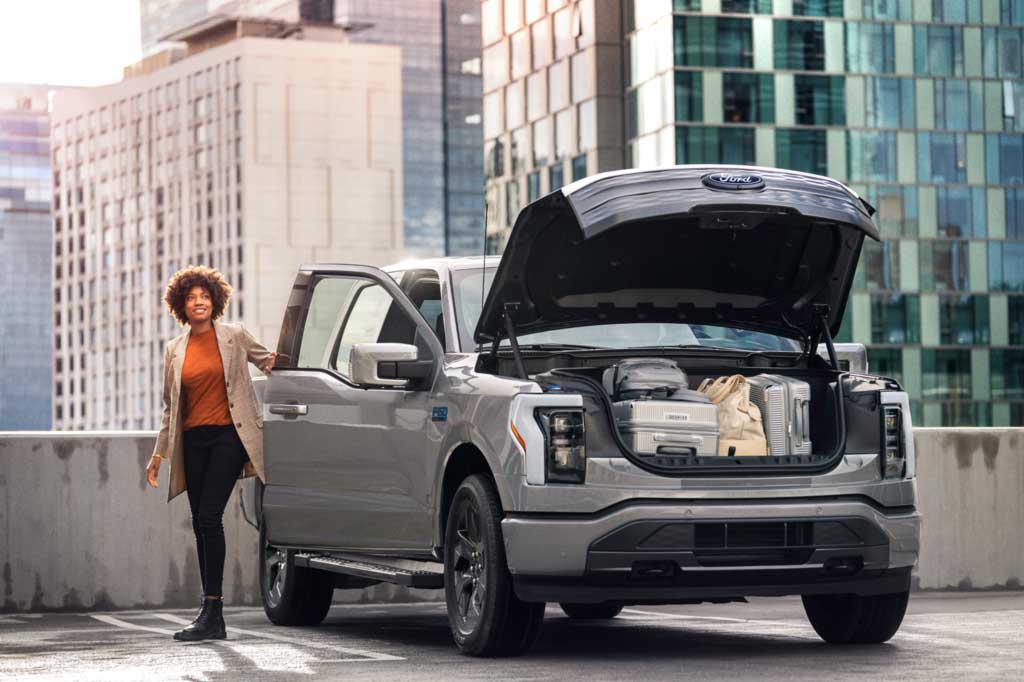
What’s In Your Frunk?
Disclaimer
* Cargo and load capacity limited by weight and weight distribution.

FordPass® App
Disclaimer
* FordPass, compatible with select smartphone platforms, is available via a download. Message and data rates may apply.

24/7 Live Support*
Disclaimers
* Available only for Ford F-150 Lightning and Mustang Mach-E owners. Message and Data Rates May Apply. By texting, you agree to receive text messages. Text HELP for information. Text STOP to cancel. Privacy Policy at www.ford.com/help/privacy/. Customer must agree to Ford's Electric Vehicle 24/7 Live Support Service terms and opt-in to phone and text communications for 24/7 Live Support and proactive charging support. Not available on select holidays including New Year's Day, Memorial Day, Independence Day, Labor Day, Thanksgiving Day, Day after Thanksgiving Day and Christmas Day.
** Roadside Assistance is a complimentary offering to all Ford owners for up to 5 years or 60,000 miles (from the date of sale), whichever occurs first.
Frequently Asked Questions
Are you thinking of buying an EV in Royston, GA? At Lake Hartwell Ford, we have electric vehicles that fit your needs. But we also know you might have questions. Our electric vehicle FAQs should help you understand a few of the ins and outs of EVs.
What kind of maintenance services are required?
How long do electric vehicle (EV) batteries last?
What is the maintenance schedule for an EV?
We have recommended maintenance intervals for various parts and component systems based upon engineering testing. For your scheduled maintenance service intervals, visit https://www.ford.com/support/maintenance-schedule
Every 12 Months or 10,000 miles
- Rotate the tires, inspect for tire wear and measure the tread depth.
- Perform a multi-point inspection (recommended).
- Inspect the brake pads, shoes, rotors, drums, brake linings, hoses and the parking brake.
- Inspect the cooling system coolant level, coolant strength, and the cooling system hoses.
- Inspect the halfshaft boots.
- Inspect the steering linkage, ball joints, suspension and tie-rod ends.
- Inspect the wheels and related components for abnormal noise, wear, looseness or drag.
Other Items
- Change Brake Fluid (Every 3 Years)
- Rotate the tires, inspect for tire wear and measure the tread depth. (Every 12 Months or 10,000 miles)
- Perform a multi-point inspection (recommended). (Every 12 Months or 10,000 miles)
- Replace the cabin air filter (Every 20,000 miles)
- Change yellow battery coolant (Every 200,000 miles)
What is the difference between a hybrid vehicle and an EV?
Is owning an EV cheaper than owning a gas-powered vehicle?
Can an EV tow a trailer?
Where can I charge my EV?
Besides your home, many parking areas and work environments. Also the government provides a map of all electric vehicle charging stations. You can search for locations in your area or along your route. Map out your route before you leave.
Do EVs have a transmission?
Do EV batteries get recycled?
Can I Install the Ford Connected Charge Station Myself?
A Ford Connected Charge Station can be ordered from your Ford Dealer or FordParts.com. We highly recommend you hire a licensed electrician to do the installation as it involves a high degree of skill. Please provide these home installation tips to a licensed electrician to support an accurate installation quote.
Where Can I Find the FordPass® App?
*FordPass App, compatible with select smartphone platforms, is available via a download. Message and data rates may apply.
App Store is a service mark of Apple Inc. Google Play is a trademark of Google LLC.
How Can I Make Sure I Stay Charged and Moving When Planning a Road Trip?
What Is the Optimal State of Charge and Impact on an EV Battery Life?
Can Weather Affect Battery Performance?
Yes, temperatures can have an affect on battery performance.
Tips for improving cold-weather range:
- Park in a garage whenever possible.
- Precondition the vehicle using the onboard technology to preheat its high-voltage battery while still plugged into the power source.
- Use heated accessories such as a heated steering wheel or heated seats, which are more power efficient than the conventional climate control system, to heat the whole cabin (when possible).
- When charging, ensure the HVAC system is turned OFF. (When preconditioning has been selected, the vehicle’s onboard technology, such as SYNC 4A, will automatically turn the HVAC system back ON.)
- If the vehicle is snow covered, brush all the snow off to eliminate extra weight and reduce aerodynamic drag.
Tips for improving hot-weather range:
- Park in a garage or under shade whenever possible.
- Precondition the vehicle using the vehicle’s onboard technology to precool the vehicle while it’s plugged into the power source, saving battery charge for the road.
- Select a moderate air conditioning setting because this feature requires more battery power to cool the cabin.



